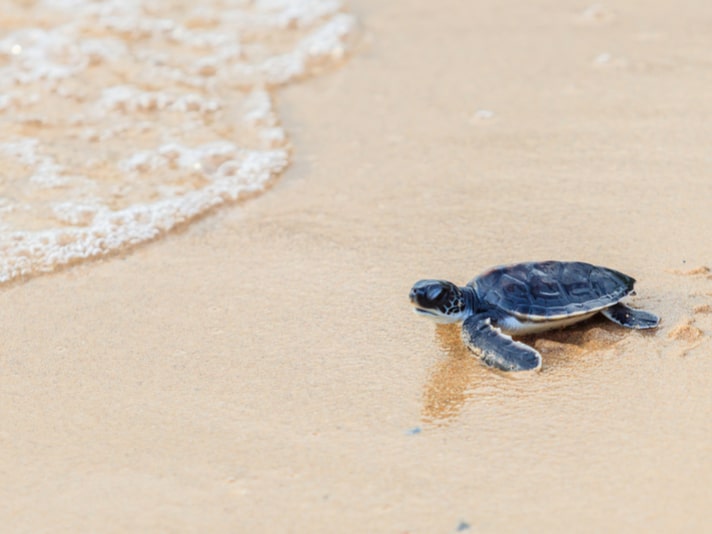Scientists with Marine Corps Base Hawaii and U.S. Marines are working together to ensure this year's green sea turtle nesting season goes off without
Scientists with Marine Corps Base Hawaii and U.S. Marines are working together to ensure this year’s green sea turtle nesting season goes off without a hitch. The base this year has 31 possible nests to watch over and the environmental team at the facility are working with the U.S. Fish and Wildlife Service, the National Oceanic & Atmospheric Administration, and non-profit sea turtle conservation and education organization Malama Na Honu to monitor the nests and protect them from any threats, animal or human.
“When a nest is discovered, we set up a high visibility perimeter around it,” Dain Christensen, a biological science technician with the MCBH Environmental Compliance and Protection Division said in a statement released on the official website for the United States marine Corps. “This is to ensure that everyone is aware, with signage, that it’s a sea turtle nest.”
“We watch the nests for 70 days, and at the 50 day mark, we prepare for the hatching to start,” Keith Roberts, a natural resources manager with MCBH said.
Man On Vacation In Hawaii Fined $1,500 For Harassing Sea Turtle And Touching Monk Seal
Where Do Baby Hawaiian Sea Turtles Go?
When an issue arises with hatchlings stuck in nests, the MCBH Environment Division rescues any stranded hatchlings that are unable to extricate themselves out of the nesting chamber.
“Another reason we excavate is to collect [biological] data,” Roberts said. “We try to get an understanding of the success rate, genetics, mortality, and size of the nest.”
This data helps to enhance how the environmental team manages the sea turtle nests. The data is added to the Hawaiian Islands database and helps ongoing research efforts.
Marine Corps Base Hawaii Environmental Team
The environmental team also works to educate area residents on the importance of turning off lights during hatching season as these lights can cause the sea turtles to wander away from the ocean and toward the lights. The team encourages residents to install sea turtle friendly lighting systems in an effort to prevent the hatchlings from becoming confused.


